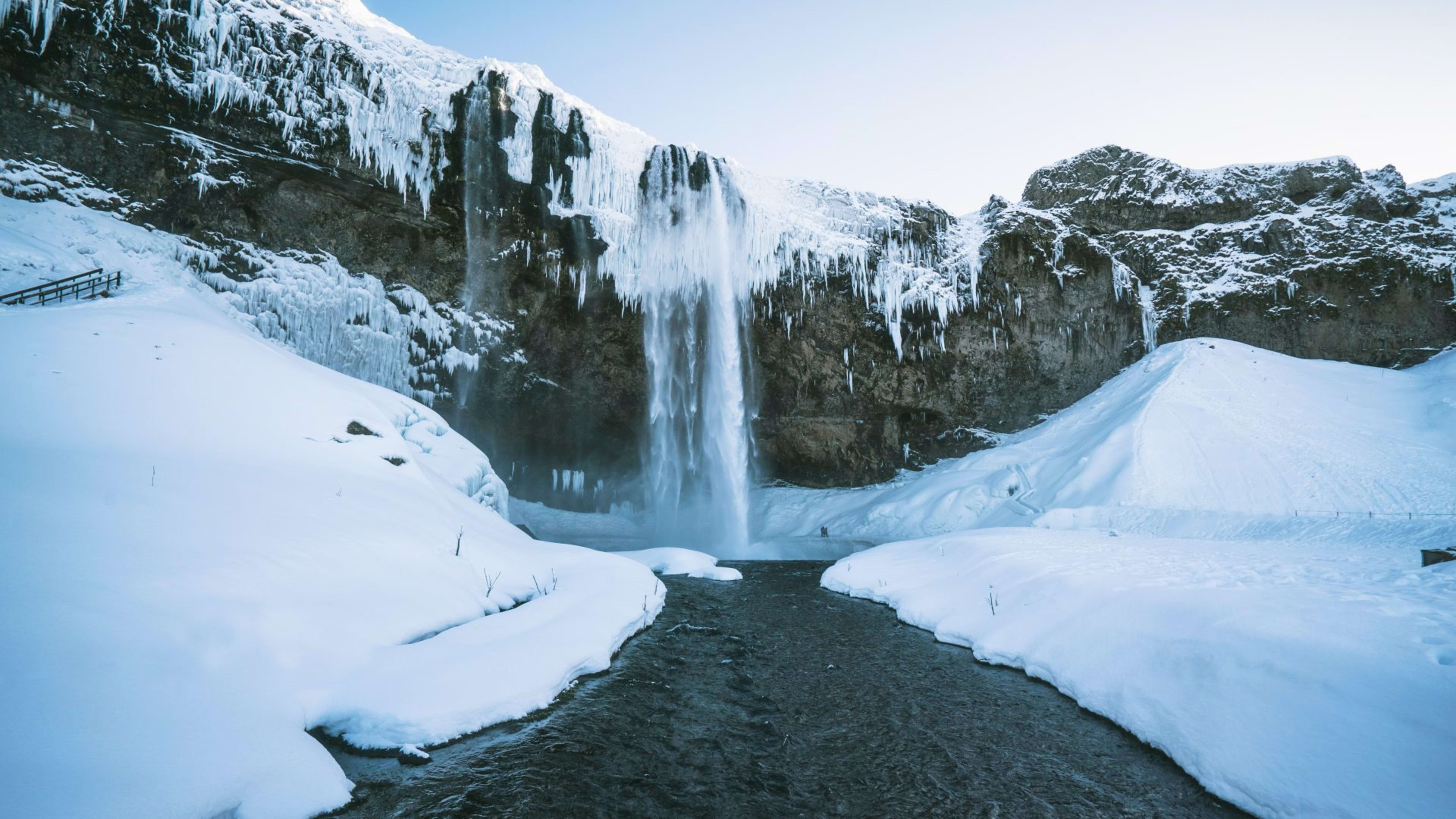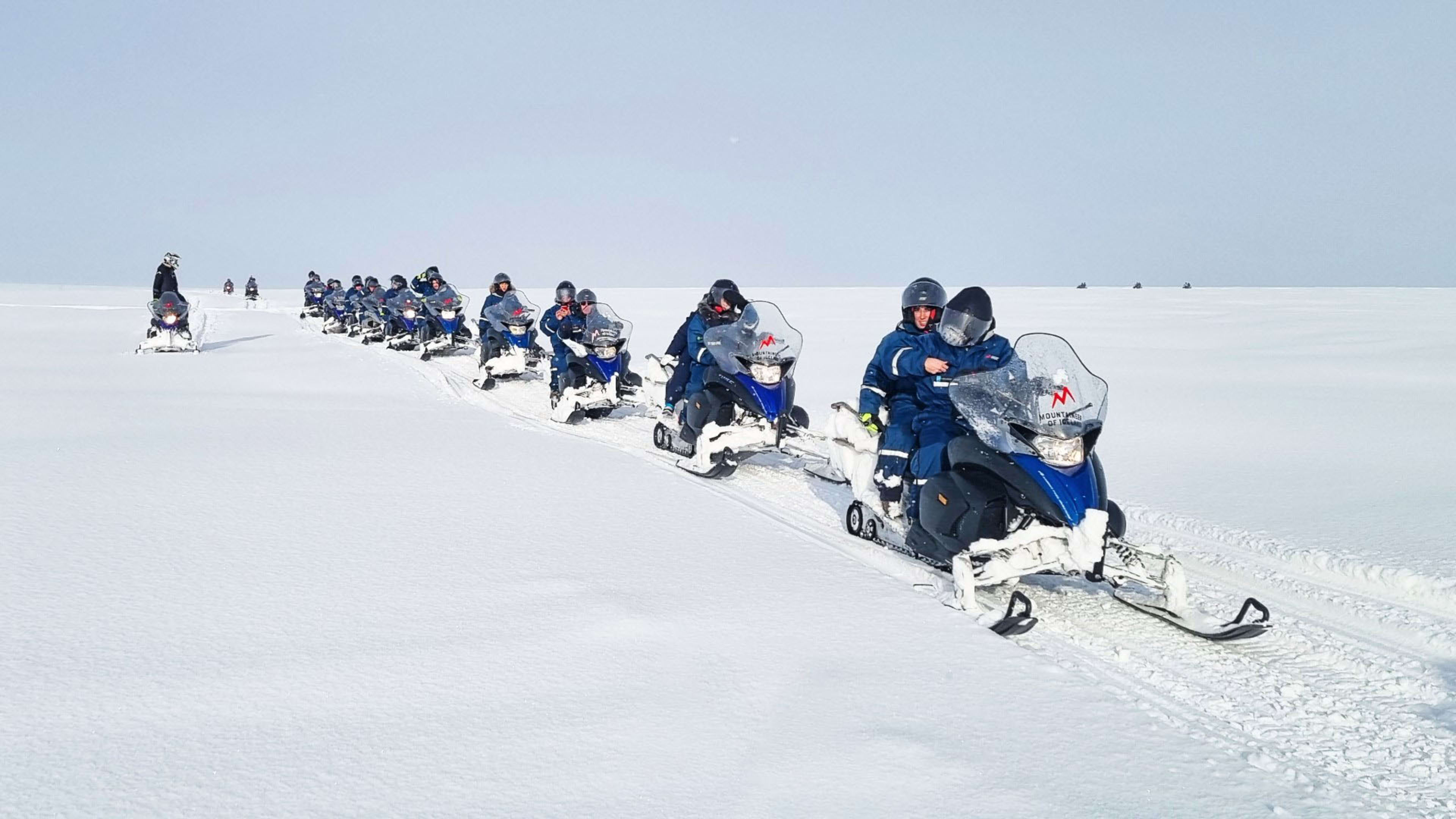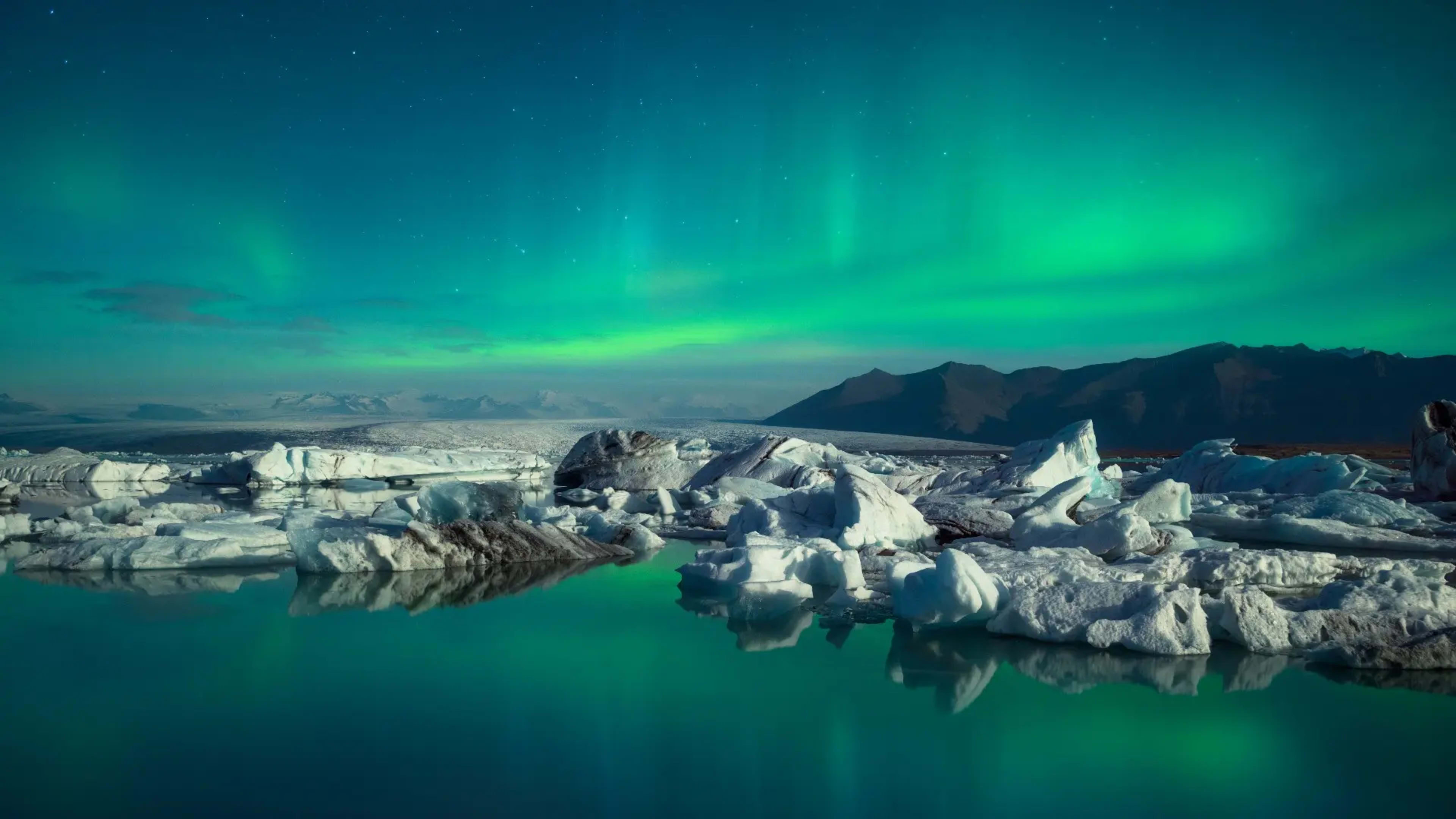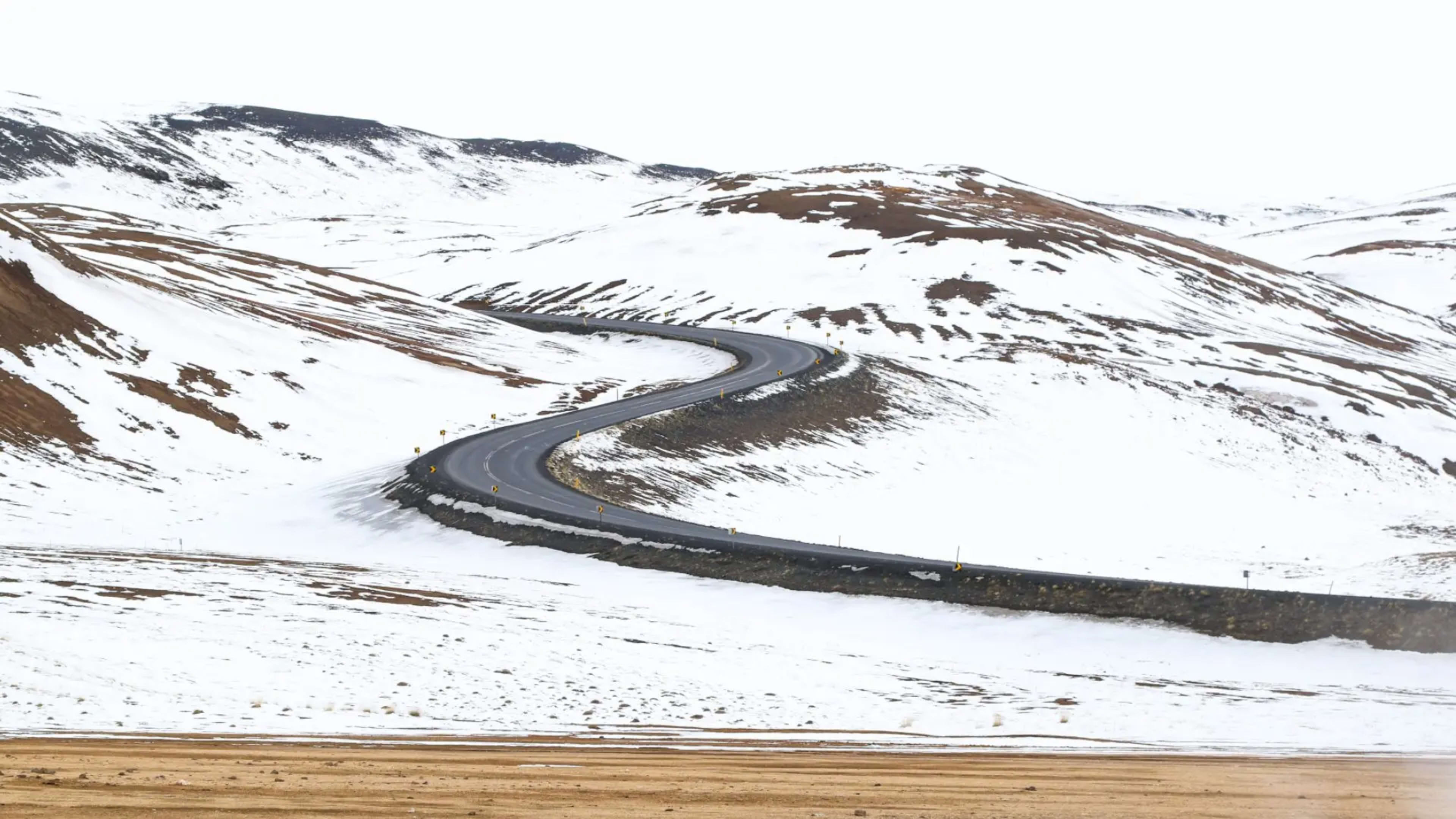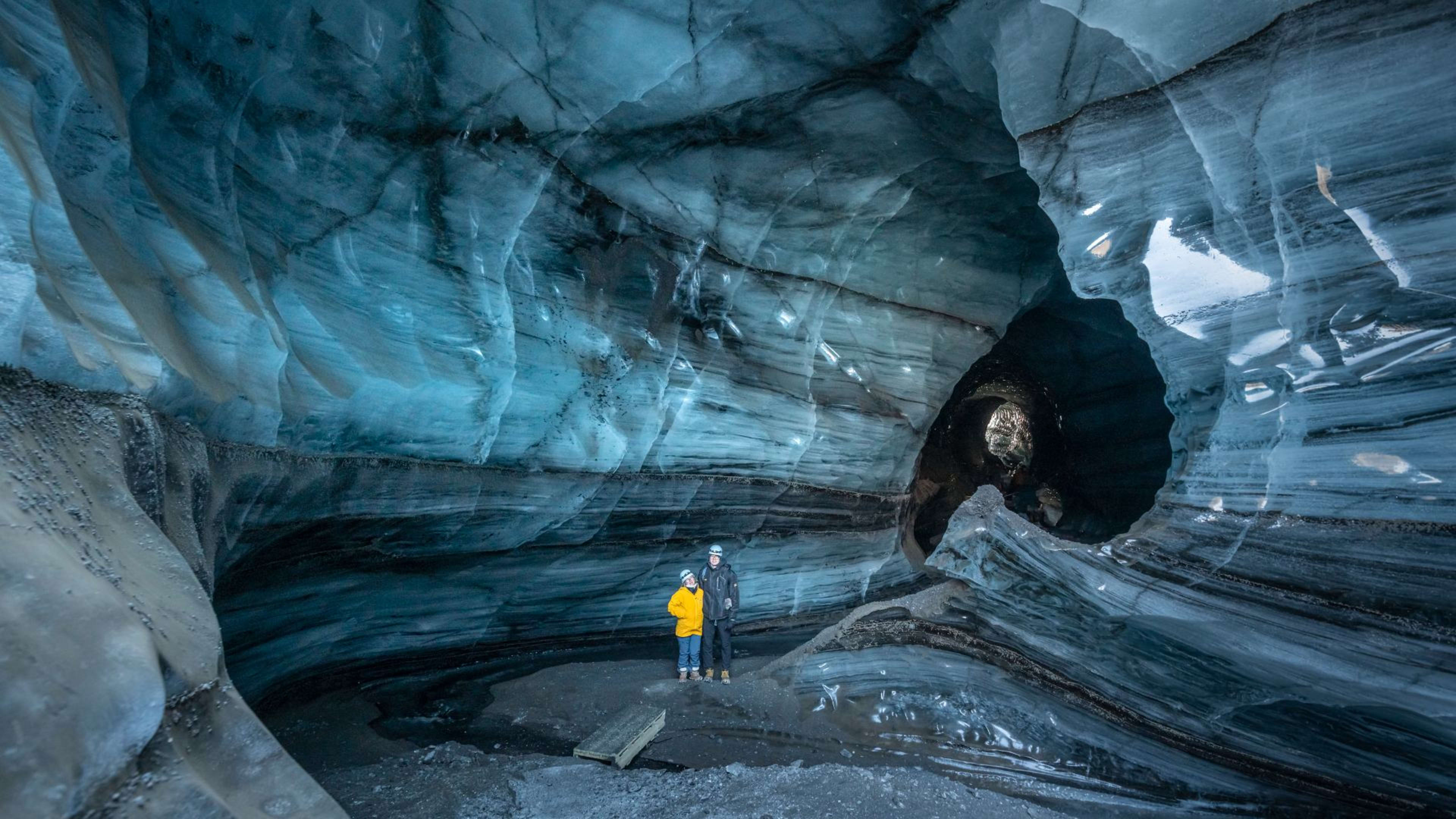Imagine yourself in a frosted landscape looking up at snowy peaks and glaciers as the Northern Lights appear in the dark sky. This is what awaits you on an Iceland winter tour.
In order to plan your dream itinerary, we’ve compiled the best things to see during your winter adventure. You’ll also find our favorite activities, a useful packing guide, and what to expect from that famous Icelandic weather.
Why visit Iceland in winter?
Visiting Iceland during the winter has its advantages. While they are the coldest and darkest months of the year, don’t be put off by the Icelandic winter weather. There are endless possibilities of activities and places to see during the “off-season”.
The top 5 reasons to visit Iceland in winter are:
- It is a quieter travel season than summer meaning you have more attractions to yourself
- There is less traffic on the roads
- There are plenty of activities you could try, from whale watching to glacier walking
- You can witness the stark landscape covered in frost and snow
- The magical Northern Lights appear at this time of year
- Explore Iceland with a winter package.
If you’re interested, keep reading. We have more in store for you!
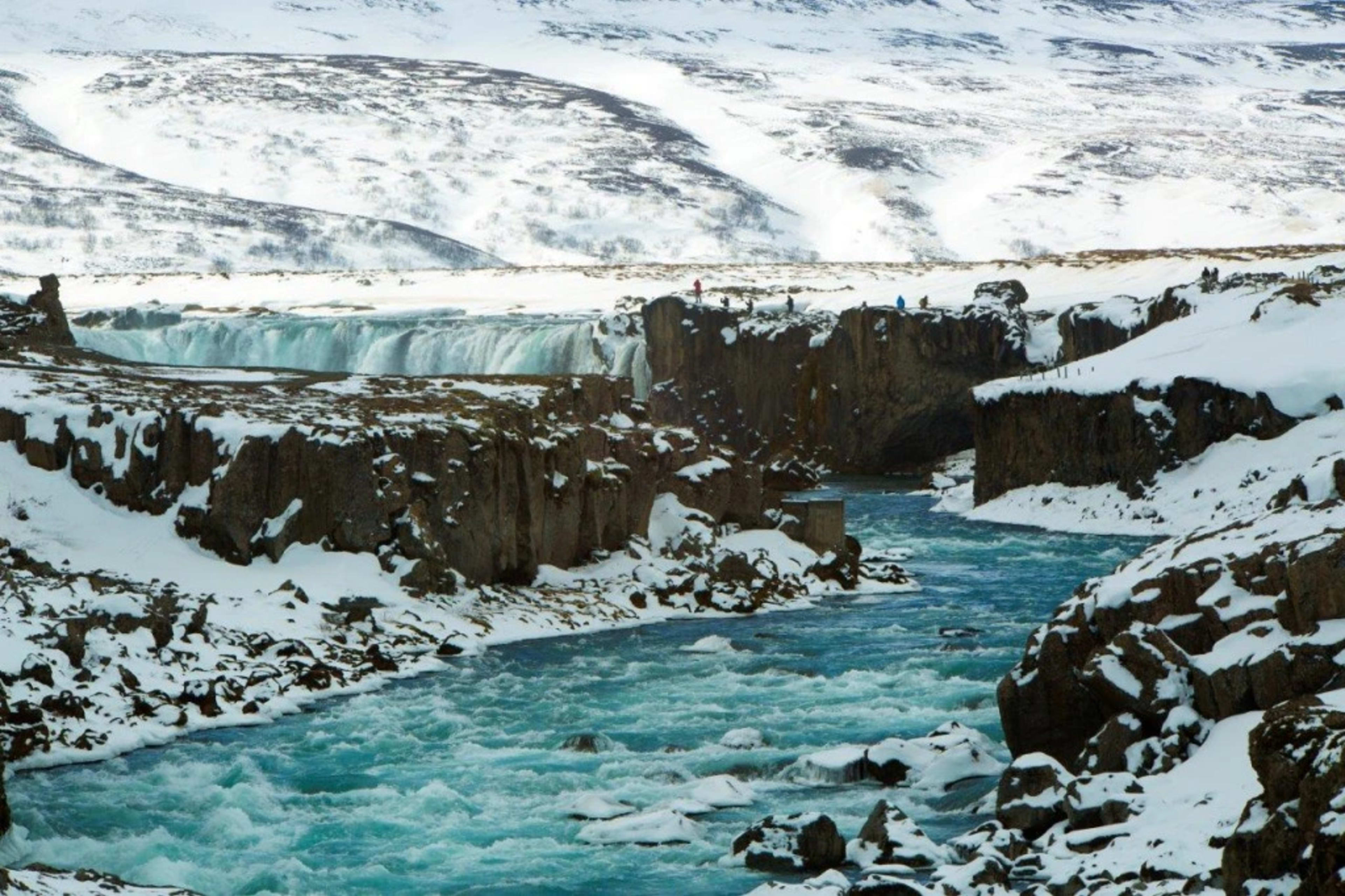
How is the weather in Iceland in winter?
This is often the first question asked about traveling to Iceland during the winter months. Rest assured, it won’t be as cold as you may expect for a northern country.
From mid-October the temperatures start to fall. At the height of winter, between December and February, you can expect average temperatures to hover around -2°C (28°F). In the north, the average is closer to -10°C (14°F).
It’s good to remember that in Iceland, the wind adds a chill factor. But come prepared and it won’t be a problem!
What to pack and what to wear on a winter trip to Iceland
Icelanders have a saying: “There is no such thing as bad weather, just bad clothing”. This is the philosophy to keep in mind when visiting Iceland.
In winter, the weather becomes more changeable, so it’s best to come ready for everything. Bring layers so you can adapt to the day’s weather and appreciate all that Iceland has to offer, come rain or shine, snow or wind.
Here is a list of packing essentials for your Iceland winter trip:
- Lightweight wool underlayers
- Fleeces and warm sweaters
- An insulated jacket that’s waterproof and windproof
- Waterproof or winter trousers
- Gloves, scarf, and warm hat
- Sturdy walking or hiking boots
- Thermal underwear and socks
- Swimwear, flip flops, and a towel to visit hot springs or spas
What about daylight hours?
Days become short during the winter in Iceland. As the island is located near the Arctic Circle, the difference between summer and winter daylight is extreme.
While you could witness the midnight sun in June and July, in winter you could experience a near-polar night in December and January. A polar night is when the sun doesn’t rise above the horizon, and so there’s no daylight.
From mid-October, you can expect the number of daylight hours to reduce until the winter solstice. Throughout November Iceland gets around 5-6 hours of daylight, falling down to 3-4 hours in December.
From January the hours of daylight start to climb back up. From February and March, they go from 7 to nearly 14 hours of daylight. At this time, there is finally more light than darkness.
Why should you travel during this dark period?
Darkness is what you’re after if you intend on catching a glimpse of the magical Northern Lights. This natural phenomenon occurs near the Earth’s poles and can only be viewed in a dark sky. In winter, there is plenty to go around.
Top places to add to your must-see Iceland winter list
Winter tours in Iceland can be as diverse and exciting as summer vacations. While the highlands and Westfjords are best kept for the summer, there is plenty to visit during the wintertime.
Pick some (or all!) of the following Icelandic locations for a memorable winter adventure:
- Join in the winter festivities of the capital, Reykjavík
- See the stunning landscape of the Snæfellsnes peninsula
- Stop by the village of Vík and its nearby black sand beach, Reynisfjara
- Discover the varied wilderness of the Vatnajökull National Park
- Roam around the lunar landscape of the Lake Mývatn area
- Visit the highlights of the Golden Circle
- Admire the icebergs glistening at the Jökulsárlón glacier lagoon
- Walk amongst shining ice at the Diamond Beach
- Explore the fishing villages and fjords of East Iceland
- Photograph all the frosty waterfalls, from Goðafoss and Seljalandsfoss

Top things to do in Iceland in winter
You’re now ready with all the best places to visit in winter, but what about the must-do activities? What thrilling excursions and day trips should you add to your itinerary?
We’ve compiled 10 must-dos in Iceland in winter for some inspiration:
1. Chase the Northern Lights
If you’re traveling to Iceland in winter, this is the ideal time to book a Northern Lights tour. From late August, you can witness this natural phenomenon, also called Aurora Borealis, in Iceland.
As the winter has a low amount of daylight hours, it means more time to admire them in the dark night sky. You could book a specific Northern Lights package for your vacation, or you could add an excursion to your existing itinerary.
- Check out these Iceland Northern Lights travel packages.
- Blog: Your guide to the Northern Lights in Iceland.
Travel to these spots for your best chances to see the Northern Lights in Iceland:
1. North Iceland
North Iceland sits right below the line of the Arctic Circle and the aptly named “Northern Lights Belt”. This means it is the best region in Iceland to experience darkness and the famous Aurora Borealis.
No matter where you’re staying along the way, North Iceland is full of smaller urban centers with less light pollution – perfect for your viewing pleasure.
2. Snæfellsnes peninsula
This remote western peninsula is another popular destination if you’re chasing the Northern Lights. As opposed to North Iceland, it has the advantage of being located closer to Reykjavík and so can be reached more easily if you have a short vacation.
Here you’ll find breathtaking coastal landscapes away from city lights. You could also admire the Aurora Borealis against the backdrop of its high peaks like Kirkjufell.
3. South coast
Travel to the quaint villages, black sand beaches, and vast wilderness of the south coast to see the Northern Lights. This region benefits from a slightly warmer climate than the north thanks to the Gulf Stream. You’ll also find plenty of darkness away from light pollution for your Aurora hunting.
- See the south coast on an Iceland winter self-drive tour.
4. Reykjavík
If you’re short on time or you’d prefer to stay in Iceland’s capital city, you could still check the Northern Lights off your bucket list.
Reykjavík has quite a few parks and miles of coastline, which are perfect for getting away from the city’s artificial light. Sometimes the solar activity is so strong, you may be able to see the colorful ribbons from the city center.
From the capital, you could also take some Northern Lights excursions, either by bus or by boat. These will take you away from the city for the night to give you the best conditions to witness the Aurora Borealis.
- Book a multi-day tour from Reykjavík.
Check out this guide to the best places to see the Northern Lights in Iceland for even more ideas.
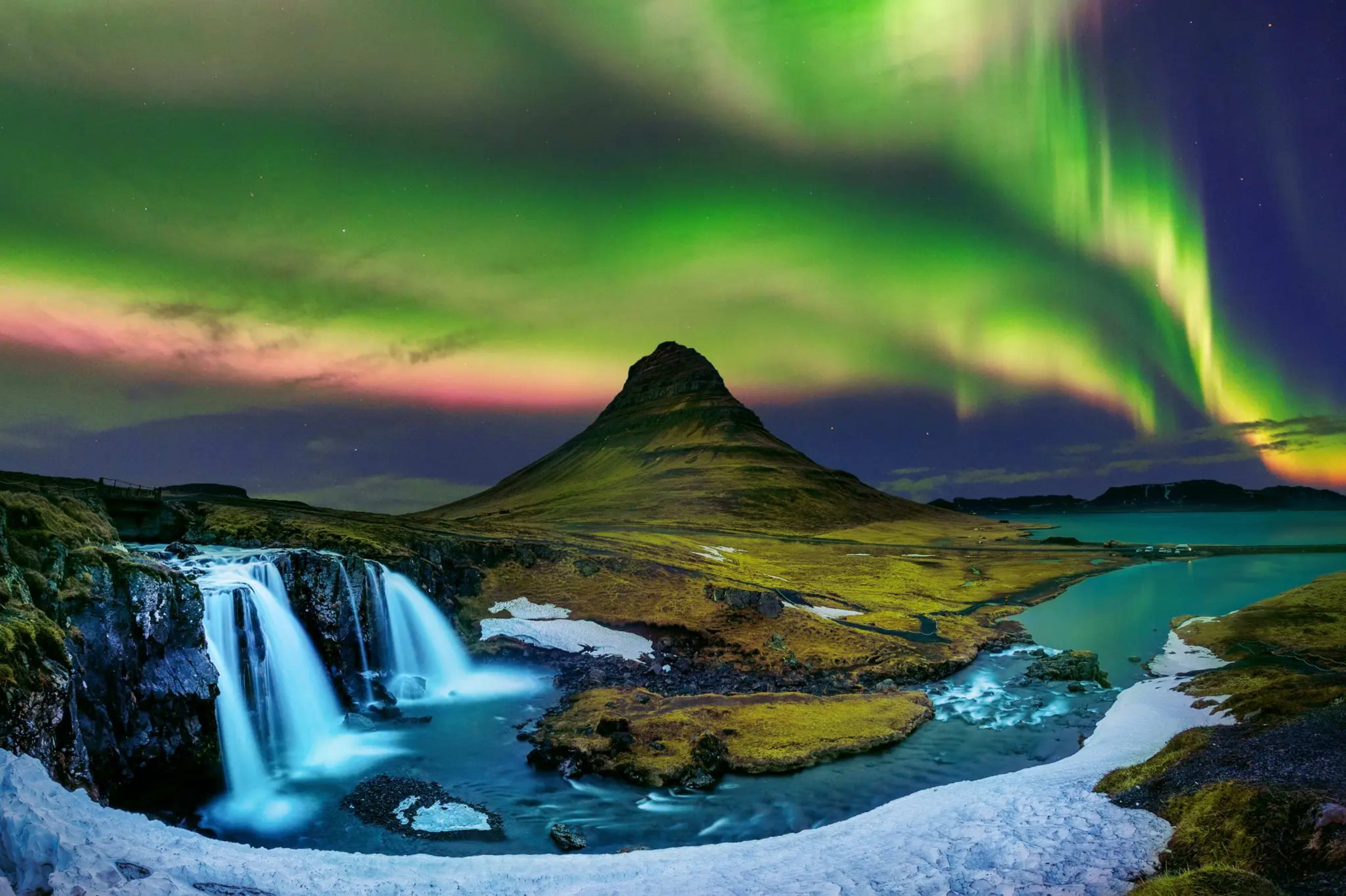
2. Discover the ice caves in Iceland
Book one of the coolest winter excursions available in Iceland. Go inside a glacier to explore and admire the vivid blue colors of the naturally formed ice caves.
Ice caving tours include all the required gear (helmet, headlamp, and crampons) and expert guides, so you’re in good hands.
You could also walk Into the Glacier. This is a magnificent man-made ice cave beneath the Langjökull ice cap. Descend into the icy tunnels of Langjökull that have been carved out to show you what it’s like beneath the surface.
3. Drive the Ring Road
For a stunning winter road trip in Iceland, take on Route 1 aka the Ring Road.
At this time, you can expect driving to be a bit slower than in summer due to the weather and road conditions. But don’t let that stop you! You can still make it a memorable trip with snow-covered peaks as a backdrop and Northern Lights.
- Check out these Iceland Ring Road tours.
- Blog: Driving Iceland’s Ring Road – ultimate guide.
Safety tips to drive in Iceland in winter
Here are our top recommendations if you want to take on a self-drive tour of Iceland in winter:
- First, make sure you are an experienced winter driver
- We recommend you rent a 4×4 (4-wheel drive)
- Keep your headlights on at all times – this is mandatory in Iceland!
- Use a map and do not rely solely on your GPS
- Every morning check the weather and road conditions before setting off
- Slow down if you’re in doubt and take your time
- Remember that with Iceland Tours you have support 24/7
4. Go glacier hiking
Did you know that 11% of Iceland’s mainland is covered in glaciers? Make sure to take some time to explore these icy giants with a guided walk.
Guides will lead you safely onto the frozen landscape and you’ll be equipped with all the necessary gear, including crampons. This will allow you to see the snowy landscape, glacial ice sculptures, ice ridges, and deep crevasses from up close.
There are a few locations to try this sort of exploration. You could embark on a trip atop the outlet glacier in Skaftafell, extending out from the mighty Vatnajökull, the largest glacier in Europe. Or visit Sólheimajökull, an outlet glacier from Mýrdalsjökull, Iceland’s fourth-largest glacier.
- Find out the best glaciers to visit in Iceland.
5. Snowmobile atop glaciers
Another fantastic way to experience the ice of Iceland is snowmobiling. Yes, that’s right, you can snowmobile atop glaciers during your vacation here.
Winter and summer alike, try your hand at driving a snowmobile on top of the Mýrdalsjökull glacier or across the Langjökull ice cap. You could also take an adventure from the Gullfoss waterfall as an add-on to a Golden Circle tour.
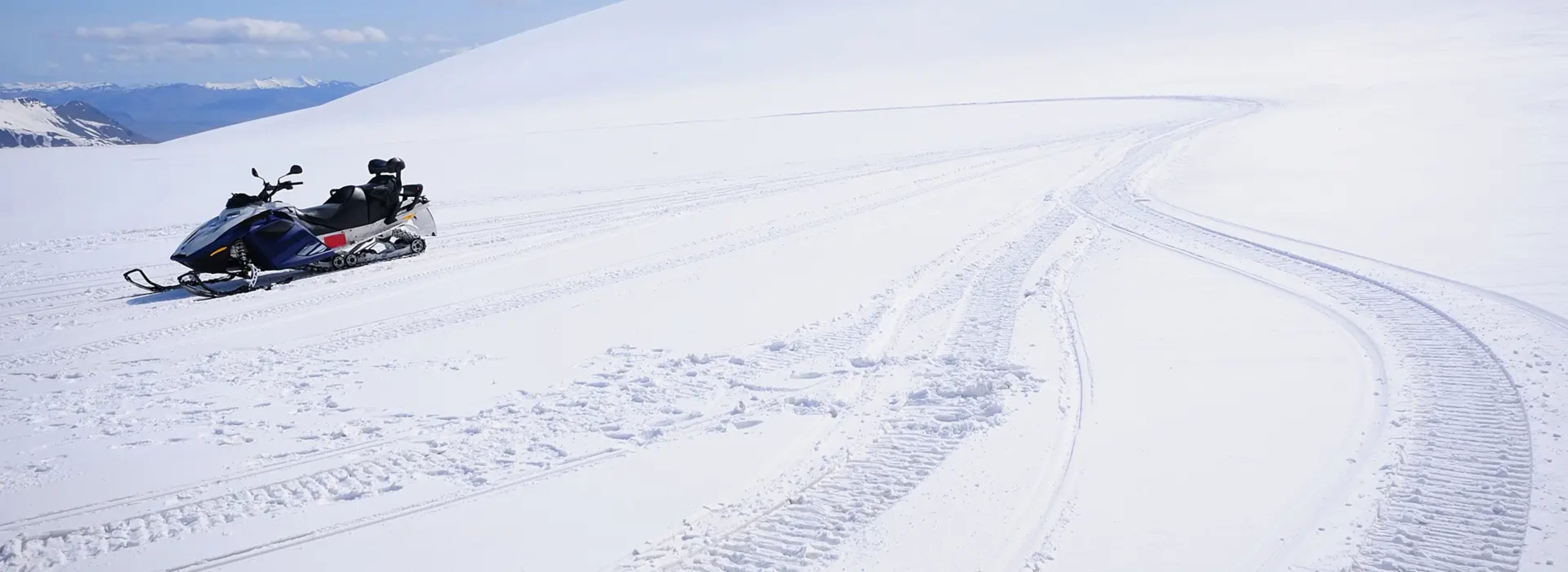
6. Go whale watching
Whale-watching tours are available all year long so don’t let the conditions of winter put you off this wildlife excursion.
The main benefit of a winter tour is that there are fewer visitors. This means there’s likely to be a smaller group on the boat than in summer. When there are whale sightings, you’ll have a great view to witness the beautiful sea creatures and take fantastic photos.
You can also appreciate a different set of whales at this time. Belugas migrate south during the winter when the ice starts to form in the Arctic. In certain areas, like off the Snæfellsnes peninsula, you can spot orcas in the winter.
You’re also likely to see dolphins and harbor porpoises, and if you’re lucky minke whales and perhaps even a humpback whale.
Another bonus of winter is the backdrop of your cruise. On the horizon, you could admire the snow-topped mountains and coastline of Iceland. The Northern Lights may also make an appearance for an even more memorable experience and photos.
7. Dig your teeth into Icelandic cuisine
Whether you’re visiting for a tour of Iceland or for a short city break, Reykjavík is the ideal place for foodies to explore.
Here you’ll find a vast array of restaurants serving traditional Icelandic dishes as well as international cuisine. You could even take a food tour of the capital to get a taste of local ice cream, pastries, seafood (including shark!), Icelandic spirits, and more.
Or why not take a day trip to the idyllic Friðheimar greenhouse? At Friðheimar, they grow pesticide-free tomatoes and cucumbers with the aid of geothermal heat.
- Related: Best Restaurants in Iceland.
8. Relax in a hot spring or spa
Iceland is recognized for its volcanic and geothermal activity. One of the top benefits of this is the naturally heated pools and hot springs dotted around the country.
In the capital, you’ll find nearly 20 swimming pools that the locals love to visit every day, summer or winter. You could also treat yourself to a spa day at the Blue Lagoon in the nearby Reykjanes peninsula.
If you’re touring the country you could visit the Húsafell Canyon Baths, the Secret Lagoon, or the Mývatn Nature Baths. There are also natural pools in the countryside which are free to dip in.
These will all allow you to warm up and relax in soothing waters after a day out in the snowy Icelandic landscape.
9. Snorkel between the tectonic plates
It’s not quite snorkeling with tropical fish in the Caribbean, but this will be an experience like no other.
Silfra is a fissure created by the separation of the North American and Eurasian tectonic plates cutting through Iceland.
The fissure fills with glacial water that has been filtered underground for decades through hardened, porous lava rock. The process of the glacial water makes Silfra one of the clearest bodies of water on earth with up to 120 meters (394 feet) of visibility.
Come snorkel at Silfra for an unforgettable time!
- Look up all the excursions and day tours you could add to your Iceland itinerary.
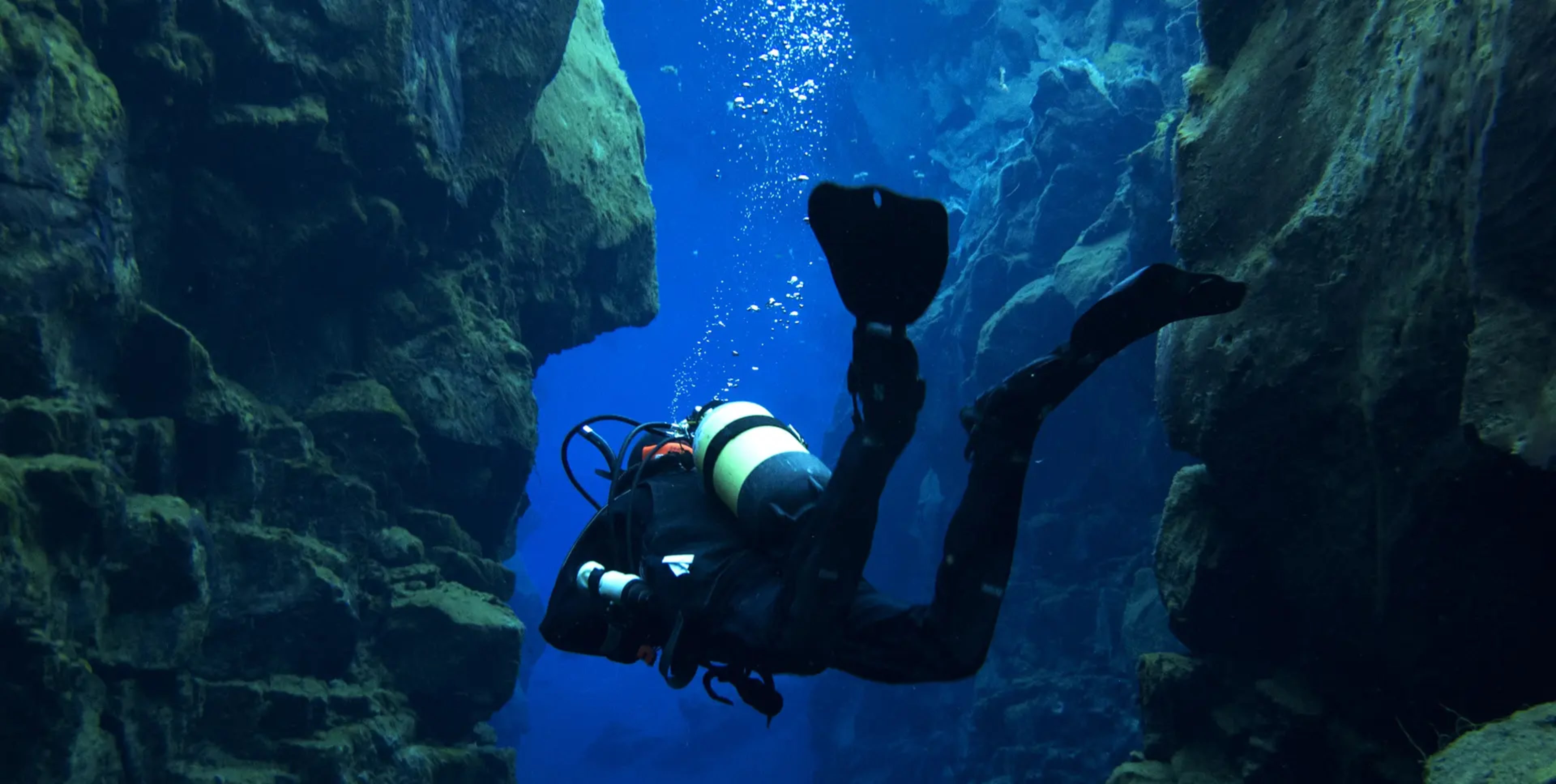
10. Attend a festival
Major events and festivals happen throughout the year in Iceland. This means even during the winter season you’ll find plenty to do. Join the locals or an international audience at top music and cultural festivals.
The best winter celebrations and events include:
- Reykjavík International Film Festival – October
- The lighting of the Imagine Peace Tower – October
- Iceland Airwaves music festival – November
- Christmas and New Year’s Eve celebrations – December
- Þorrablót midwinter celebration – January
- Reykjavík International Games – January
- Winter Lights Festival – February
- Reykjavík Food and Fun Festival – March
- Reykjavík Blues Festival – April
- Children’s Culture Festival – April
Plan your trip with Iceland Tours
When you’re ready to plan your winter adventure, get in touch with the travel experts at Iceland Tours.
You’ll have access to 24/7 support throughout your tour with peace of mind knowing we’re there for you along the way.
Our Iceland packages include tried-and-tested routes, accommodation, car rental (for self-drive tours), and all the activities you want to do. Having a local plan your vacation means you’re in good hands when it comes to enjoying the best Iceland has to offer.

